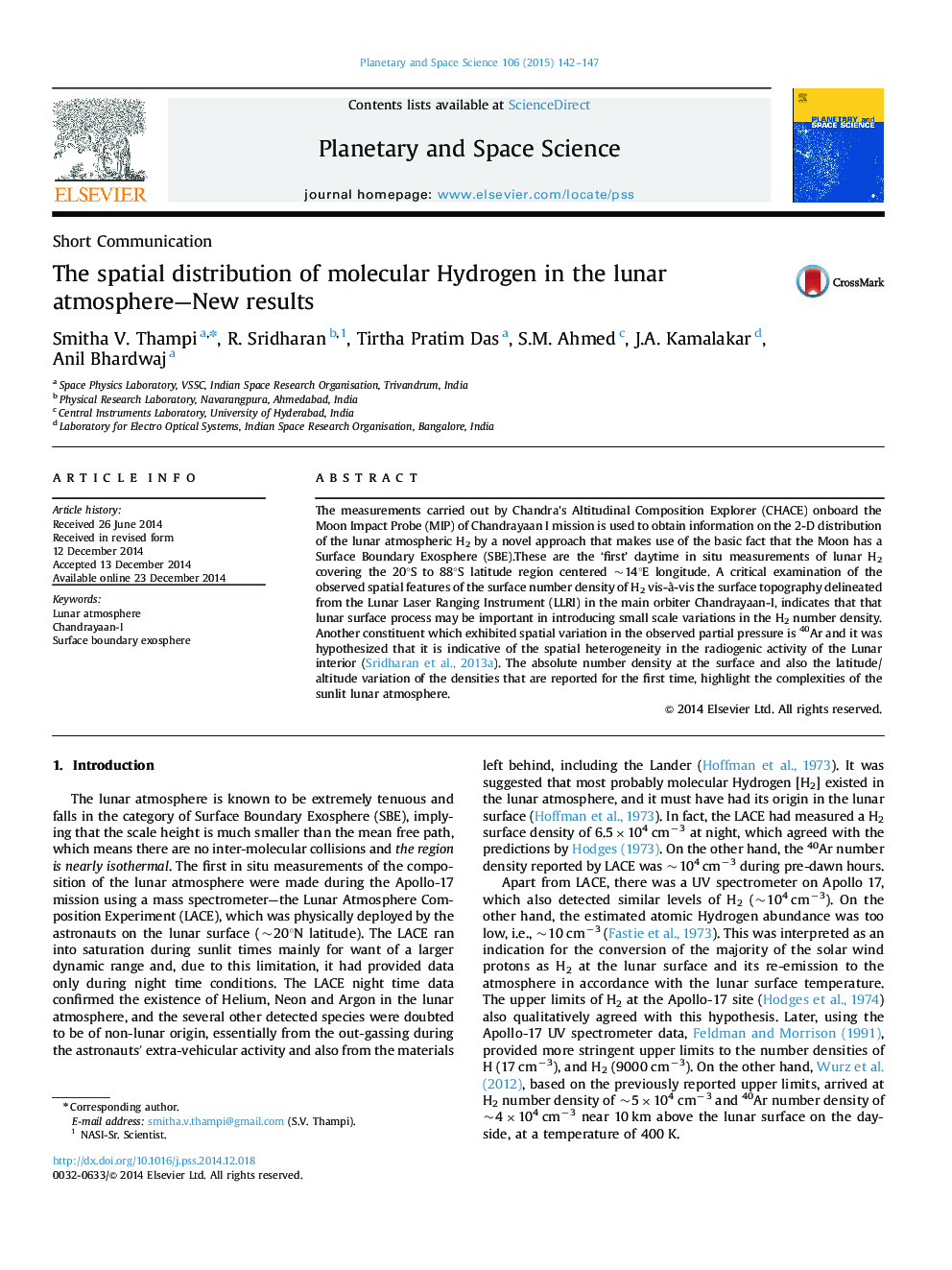| Article ID | Journal | Published Year | Pages | File Type |
|---|---|---|---|---|
| 1781042 | Planetary and Space Science | 2015 | 6 Pages |
•These are the ‘first’ daytime, direct in situ measurements of lunar H2 and Argon 40, covering 20°S to 88°S latitude region centered ~14°E longitude.•The estimated number densities agree reasonably well with some of the previous estimates, for both the species.•Lunar surface process may be important in introducing small scale variations in the H2 concentrations.
The measurements carried out by Chandra׳s Altitudinal Composition Explorer (CHACE) onboard the Moon Impact Probe (MIP) of Chandrayaan I mission is used to obtain information on the 2-D distribution of the lunar atmospheric H2 by a novel approach that makes use of the basic fact that the Moon has a Surface Boundary Exosphere (SBE).These are the ‘first’ daytime in situ measurements of lunar H2 covering the 20°S to 88°S latitude region centered ~14°E longitude. A critical examination of the observed spatial features of the surface number density of H2 vis-à-vis the surface topography delineated from the Lunar Laser Ranging Instrument (LLRI) in the main orbiter Chandrayaan-I, indicates that that lunar surface process may be important in introducing small scale variations in the H2 number density. Another constituent which exhibited spatial variation in the observed partial pressure is 40Ar and it was hypothesized that it is indicative of the spatial heterogeneity in the radiogenic activity of the Lunar interior (Sridharan et al., 2013a). The absolute number density at the surface and also the latitude/altitude variation of the densities that are reported for the first time, highlight the complexities of the sunlit lunar atmosphere.
